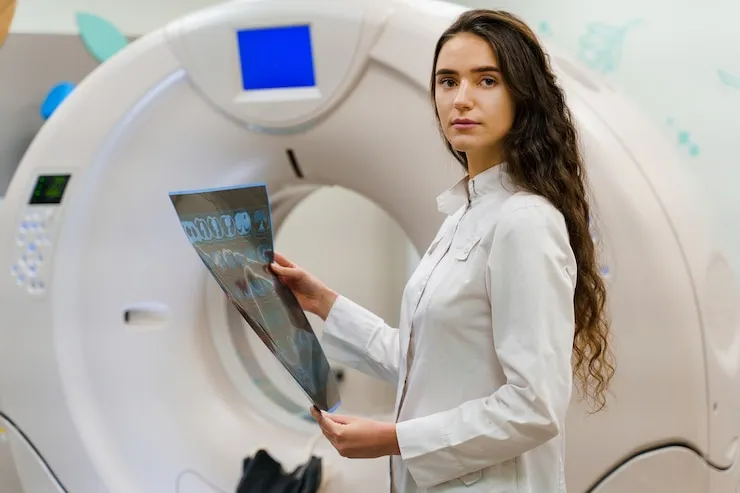Aaron Jackson
Aneurysms: Understanding the Bulges in Your Blood Vessels
An aneurysm is a serious medical condition that occurs when a weak spot in the wall of an artery or blood vessel balloons outward, creating a bulge. This bulge can weaken the artery further, increasing the risk of a life-threatening rupture. Aneurysms can develop anywhere in the body, but they most commonly occur in the aorta, the main artery that carries blood from the heart to the rest of the body.
This article dives deep into the world of aneurysms, exploring the different types, their causes, treatment options, and how to live well with an aneurysm diagnosis.
Types of Aneurysms
There are several different classifications for aneurysms, depending on their location and shape:
- Aortic Aneurysm: This is the most common type of aneurysm, affecting the aorta, the largest artery in the body. There are two main subtypes:
Abdominal Aortic Aneurysm (AAA): Located in the portion of the aorta within the abdomen.
Thoracic Aortic Aneurysm (TAA): Develops in the chest section of the aorta. - Cerebral Aneurysm: A bulge in an artery supplying blood to the brain. These can be life-threatening if they rupture, causing a hemorrhagic stroke.
- Peripheral Aneurysm: Occurs outside the aorta, in arteries located in the arms, legs, or other regions of the body. Common types include:
Popliteal Aneurysm: Develops behind the knee.
Carotid Artery Aneurysm: Located in the arteries on either side of the neck, supplying blood to the brain and face.
Iliac Aneurysm: Affects the arteries in the pelvis. - Saccular Aneurysm: The most common shape, resembling a pouch or sac bulging out from the artery wall.
- Fusiform Aneurysm: Aneurysm that causes a wider bulge affecting the entire circumference of the artery wall.
- Dissecting Aneurysm: A tear forms within the layers of the artery wall, causing blood to flow between the layers and creating a bulge.
The hypothalamus, located just above the pituitary gland, acts as a control center. It communicates with the pituitary gland through a network of blood vessels and nerve impulses, regulating hormone production based on the body's needs.
Causes and Risk Factors of Aneurysms
The exact cause of aneurysms is not always clear, but several factors can contribute to their development:
- Atherosclerosis (Hardening of the arteries): This is a major risk factor, where plaque buildup weakens the artery wall. High blood pressure puts additional stress on weakened walls.
- Age: Aneurysms are more common in older adults as the risk of weakened arteries increases with age.
- Family history: Having a close relative with an aneurysm increases your risk.
- Smoking: Smoking damages blood vessels and increases the risk of atherosclerosis.
- High Blood Pressure: Uncontrolled hypertension puts constant strain on artery walls.
- Connective tissue disorders: Conditions like Marfan syndrome or Ehlers-Danlos syndrome can weaken connective tissues in the body, including those in the artery walls.
- Trauma: Injuries to the chest or abdomen can damage arteries and increase the risk of aneurysms.
- Infection: In rare cases, infections can weaken artery walls and lead to aneurysms.

Signs and Symptoms of Aneurysms
Unfortunately, aneurysms often don't exhibit any symptoms until they become large or rupture. However, some potential warning signs depending on the location of the aneurysm include:
Abdominal Aneurysm:
- A pulsating sensation in the abdomen
- Constant or severe pain in the abdomen or lower back
Thoracic Aortic Aneurysm:
- Chest pain (may be sudden and severe)
- Hoarseness
- Difficulty swallowing
- Coughing up blood
Cerebral Aneurysm:
- Sudden and severe headache (the worst headache of your life)
- Nausea and vomiting
- Stiff neck
- Vision problems
- Weakness or numbness on one side of the face or body
- Seizure
- Loss of consciousness
Peripheral Aneurysm:
- A pulsating mass in the groin, leg, or arm (depending on the location)
- Pain in the affected limb
- Numbness or weakness in the affected limb
- Skin changes or discoloration in the affected limb
It's crucial to seek immediate medical attention if you experience any of these symptoms, especially sudden and severe pain.
Diagnosis of Aneurysms
- Ultrasound: This non-invasive imaging test uses sound waves to create images of blood vessels and can detect aneurysms in the abdomen, groin, and carotid arteries.
- X-ray: While not always effective for aneurysms themselves, X-rays can sometimes reveal changes in bone structure caused by a large aneurysm pressing on nearby bones.
- CT Scan (Computed Tomography): This advanced imaging technique uses X-rays to create detailed cross-sectional images of the body, allowing for a more precise visualization of aneurysms and their location.
- MRI Scan (Magnetic Resonance Imaging): MRI scans use magnetic fields and radio waves to produce detailed images of organs and tissues, providing valuable information about aneurysms and surrounding structures.
- Angiography: This specialized X-ray technique involves injecting a contrast dye into the bloodstream to visualize blood flow within the arteries. Different types of angiography exist, including conventional angiography, magnetic resonance angiography (MRA), and computed tomography angiography (CTA), each offering varying levels of detail.
The specific tests used for diagnosis will depend on the suspected location of the aneurysm and the patient's individual situation.
Treatment Options for Aneurysms
The course of treatment for an aneurysm depends on several factors, including the type, size, location, and the patient's overall health. Here's an overview of the main treatment options:

- Monitoring: For small, slow-growing aneurysms, regular monitoring with imaging tests may be sufficient. This involves regular checkups to track the aneurysm's size and growth rate. Medications to control blood pressure and cholesterol may also be recommended to slow down the progression.
- Minimally Invasive Endovascular Repair (EVAR): This procedure is often used for abdominal aortic aneurysms. A thin tube (catheter) is inserted into an artery in the groin and guided to the aneurysm site. A stent graft, a metal mesh tube covered in fabric, is deployed to reinforce the weakened area from within.
- Open Surgical Repair: This traditional approach involves surgically opening the chest or abdomen to access the aneurysm. The surgeon removes the weakened section of the artery and replaces it with a synthetic graft. While more invasive, open surgery may be necessary for larger, more complex aneurysms or those unsuitable for endovascular repair.
- Other Procedures: Depending on the location and type of aneurysm, other specialized techniques may be employed, such as stent placement for carotid artery aneurysms or surgical clipping for cerebral aneurysms.

 Telehealth Visits Available
Telehealth Visits Available
